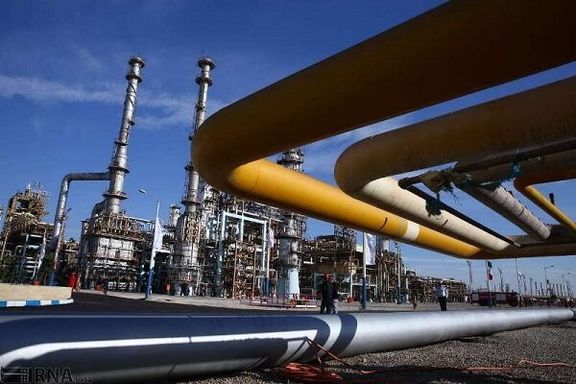Iran's Oil Refining Capacity Declining Amid Years Of Sanctions

Iran’s oil refining capacity has declined by 11 percent in 8 years and its share of global refining is just 2 percent, despite its large reserves of crude oil.

Iran’s oil refining capacity has declined by 11 percent in 8 years and its share of global refining is just 2 percent, despite its large reserves of crude oil.
Meanwhile, its regional rival Saudi Arabia has been investing billions of dollars in setting up new refineries with the ability to produce more feed for petrochemicals, a sector that aspires to make up for projected reductions in the consumption of fossil fuels in coming decades.
Iran Student News Agency (ISNA) in an article expresses hope that the new government of President Ebrahim Raisi (Raeesi) would pursue plans to expand Iran’s refining capacity. But the biggest hurdle would be Iran’s lack of resources for making the necessary investments amid a deep economic crisis.
Amid US sanctions and deep disputes with Western countries, the chance to secure foreign investments is almost non-existent. If Iran’s ally China shies away from openly doing business with Tehran. Although Beijing is buying some illicit Iranian oil, it has shifted its purchases to other countries, including Saudi Arabia.
Iran might be missing the boat in significant ways to shift from a crude oil exporter to provider of refined products and feed for petrochemicals, as other countries plan for a shift with green technologies bound to reduce fossil fuel consumption.
Iranian media and politicians have been arguing that the country should reduce its dependence on crude exports for two reasons. First, crude oil is vulnerable to sanctions, as the reality with stringent US sanctions have shown since 2018. Iran’s crude exports dropped from a height of 2.5 million barrels a day in 2017-2018 to around 200,000 bpd in the second half of 2019, when Washington imposed full sanctions. But the US never sanctioned Iran’s gasoline exports.
Second, exporting crude oil has much less profit than exporting refined products such as gasoline, Iranian officials say. But daily refining capacity has dropped to 2.1 million barrels of crude, even according to Iranian officials who usually boast about production. That can produce around 800,000 barrels of gasoline, when daily domestic consumption is 550,000 barrels. This leaves relatively little to export and make money.
If Iran exports the remaining gasoline, it is difficult to estimate how much money it makes. There are no official records of buyers, who cannot pay Iran through regular banking channels, again because of US third-party sanctions on banks that deal with Iran. If international gasoline prices would be any guide, Iran could fetch more than $20 million a day by exporting its remaining 10 million gallons, but in this case the real prices would be much lower.
Nevertheless, Iran makes a few billion dollars a year by selling gasoline and diesel in the region to buyers who find ways to pay for the discounted fuel. This has helped Tehran in getting much needed foreign currency when crude oil export, its main source of revenues, has been slashed.
If US sanctions are lifted and Iran is able to return to its previous level of crude exports, perhaps it can make some investments in its refining capacity. But to seriously prepare for the coming decades it would need billions of dollars to compete in modern refining. This level of resources would need foreign investments, since Iran’s oil revenues are barely able to feed an inefficient, centrally mismanaged economy.